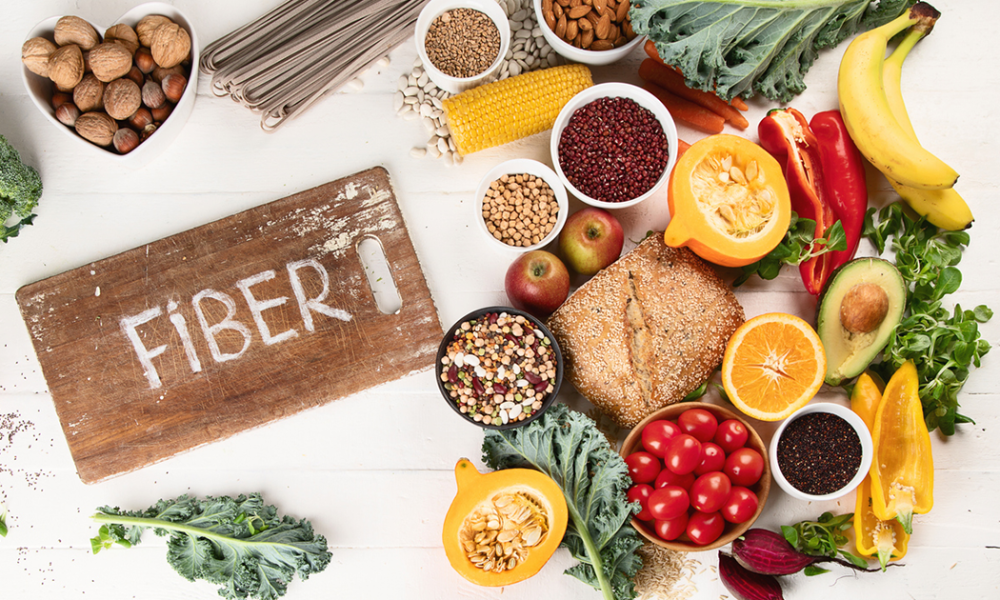In addition to keeping us regular, fibre also helps us feel full, maintains our blood sugar levels, and is good for our heart health. Despite this, most of us are not getting the recommended amount of fibre. It can be regarded as the fourth major macronutrient. This carbohydrate-derived substance keeps us regular, keeps us full, and may even protect us from certain cancers. Fibre is a type of carbohydrate that passes through your body but is not digested, so you don’t feel it. If your diet lacks fibre, you might experience bloating, cramps, constipation, or diarrhoea. Keeping your blood sugar levels in check requires fibre, which helps keep your body’s use of sugars in check, lessens your heart disease risk and reduces your hunger. So if you face these signs of fibre deficiency, it’s time to add fibre to your diet.
You’re constipated or bloated.

If you don’t get enough fibre, you’ll notice constipation and bloating, as well as irregular bowel movements, Bauer says. Fibre provides bulk in your stools, which means you’ll pass them faster. It is important to check your fibre intake first, even though many things can lead to constipation. If, on the other hand, you typically eat minimal fibre and then load up on it, you may experience bloating and gas. Be sure to get around 25 grams of fibre daily.
You’re hungry right after finishing a meal.
We can feel full when we consume fibre. “Without fibre in our diet, we will not feel full and will be reaching for our next snack as soon as we finish our meal,” Bauer explains. Patricia Bannan, R.D., author of Eat Right When Time is Tight, tells SELF fibre can take longer to cross our systems because it is not broken down and used. In addition, fibre’s effect on blood sugar helps curb cravings, so you feel full for a longer period of time.
You have high cholesterol or blood pressure.
If you have high cholesterol levels, beefing up your fibre intake can reduce them. “Fiber appears to decrease triglycerides (which make you more likely to develop heart disease), and it increases HDL cholesterol (the good cholesterol),” Giovannucci says. Giovannucci notes that it is unclear whether the blood pressure-lowering benefits from foods like fruits, veggies, and whole grains are due to fibre or other nutrients found in these good-for-you foods. If you eat these fibre-rich foods as part of your diet, your blood pressure should be improved.
You have inflammation.

An indicator that you might not be drinking enough water would be inflammation. However, you might not be getting enough fibre if you’re experiencing inflammation. When you eat a low-fibre diet, you do not nourish the “good” bacteria and microbes in your large intestine, which can change the flora in your gut. Dennett explains that healthy, diverse gut microbiota can help prevent chronic inflammation in part because they contain the majority of our immune cells. Hence, when the microbiota in our gut is unbalanced or unhealthy, there’s a greater risk for the immune system to cause unnecessary inflammation in the body.”
You’re low on energy and not sleeping well.
You could be lacking fibre if you have trouble getting out of bed in the morning. “Adding fibre to your meals will keep your blood glucose levels stable, providing your body with sustained energy through the day,” says Hass. If you eat enough fibre, you can combat this, increasing your energy levels and helping you sleep. Eating refined carbs can raise your blood sugar, making you crave more carbs, which can disrupt your sleep cycle. If you are feeling down in the afternoon, snack on high-fibre foods like fruit or fibre crackers (specifically, mini cracker pizzas, which are delicious despite popular belief).
Study after study has shown that a diet rich in cereal fibre may reduce diabetes risk by 28%. Fibre is not only useful for diabetes management, but it is also a powerful preventative. Compared to a low-fibre, high-sugar diet, a woman with type 2 diabetes is more than twice as likely to contract the disease from a high-sugar diet or people with signs of fibre deficiency.
Irritable bowel syndrome (IBS):
A person is suffering from IBS experiences diarrhoea, constipation, cramping, bloating, gas, bloating and bloating from the nerves and muscles in the large intestine. Symptom relief from IBS can be found by reducing stress, taking medicine, and avoiding triggers such as fatty foods, alcohol, carbonated beverages, and alcoholic drinks. As fibre in whole grains, bran, and fruits and vegetables softens and bulks up stools, reducing IBS symptoms and making them easier to pass. IBS is one of the most common signs of fibre deficiency.
In addition to soluble fibre, Nutriplus FibreFit is a natural source of gum acacia, which helps aid digestion and keep the digestive system healthy. It is a heat-stable and tastes and smells no different than other foods and beverages. Nutriplus Fiberfit mixed easily in beverages and sprinkled over any meal to make it fibre-rich.
Foods such as whole grains, starches, fruits, vegetables, legumes and nuts naturally contain fibre, but sugar-laden snack foods such as cookies and granola bars contain it as well. Despite the fact that cereals are advertised as great sources of fibre, they usually contain little to no fibre naturally. The fibre in snack foods is usually isolated fibre manufactured artificially.












